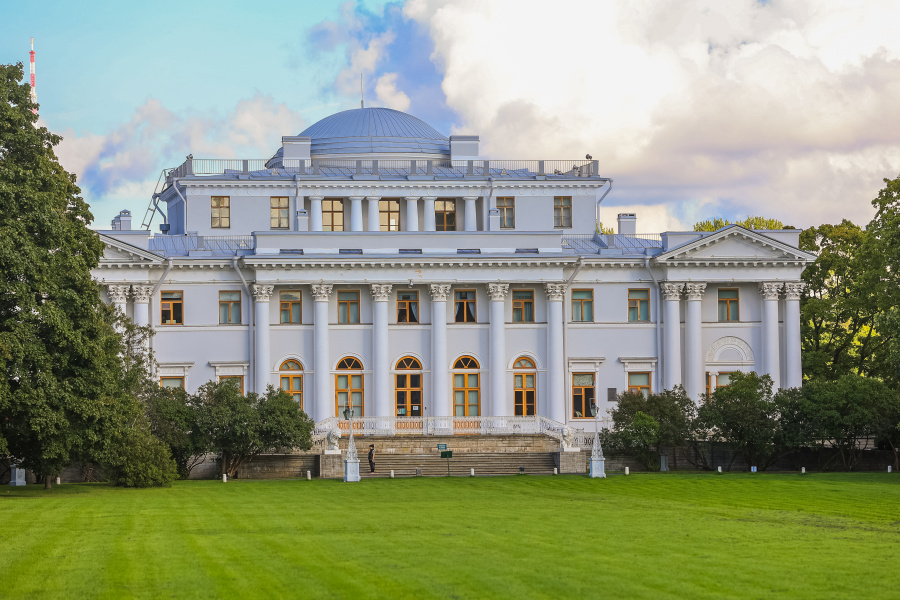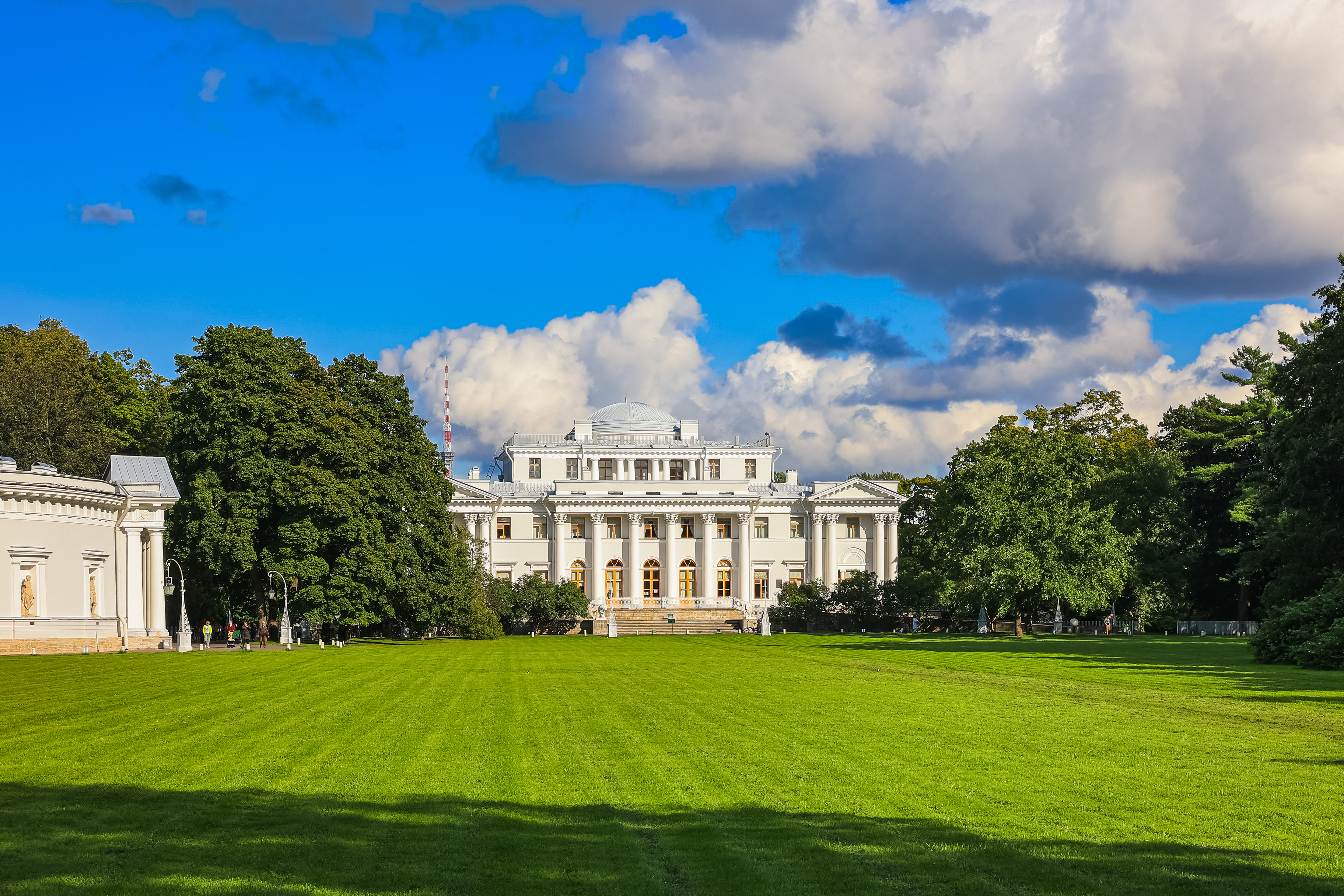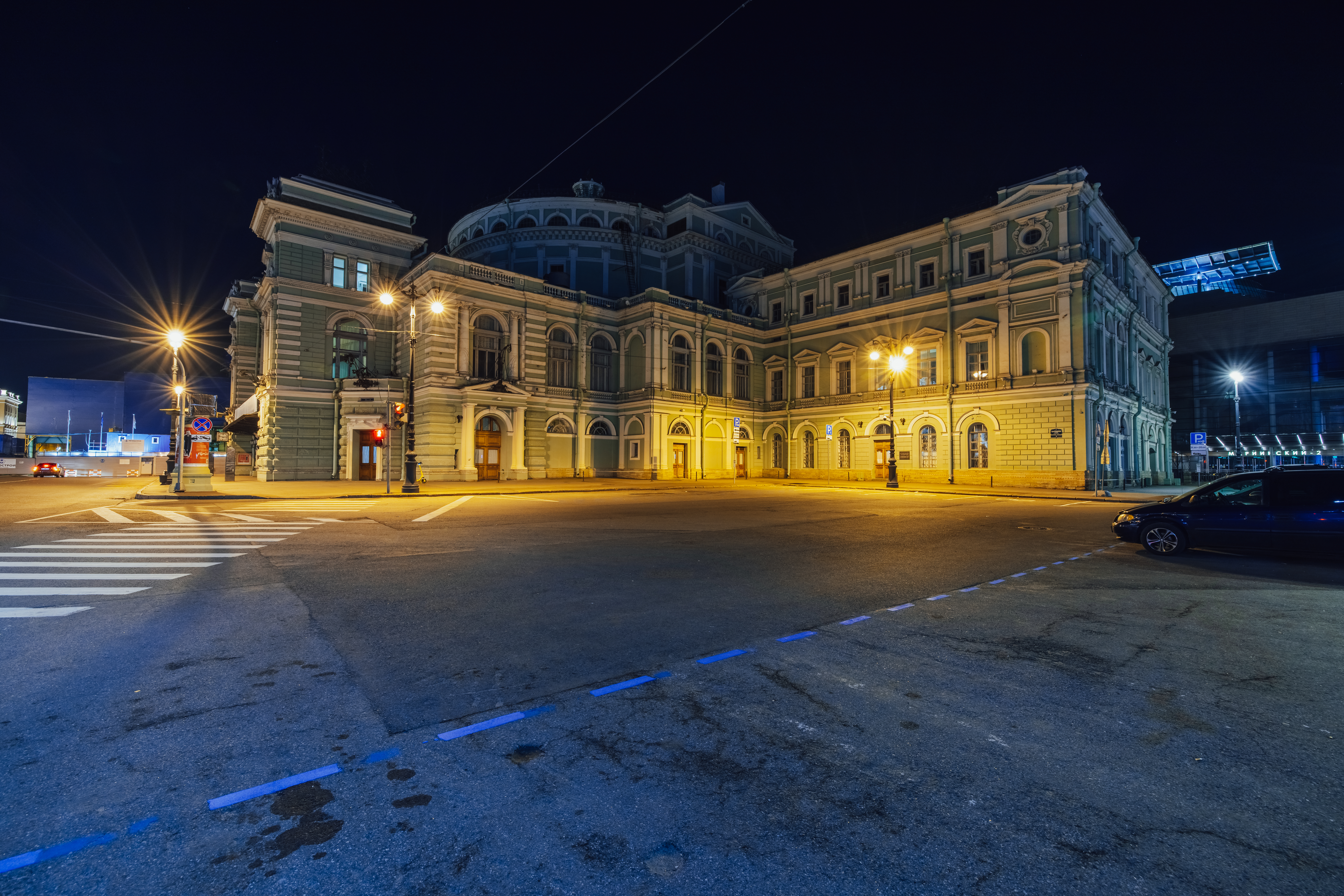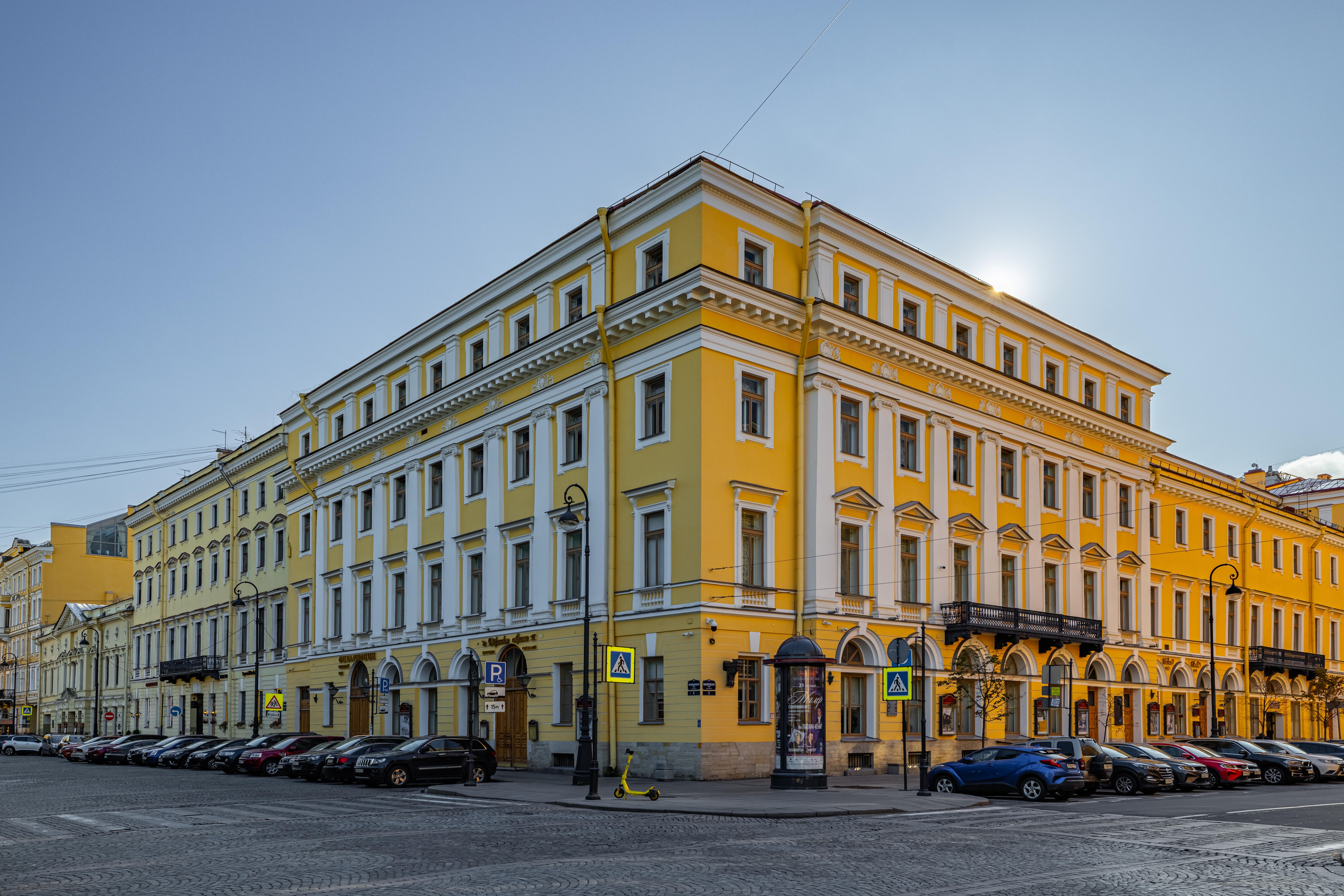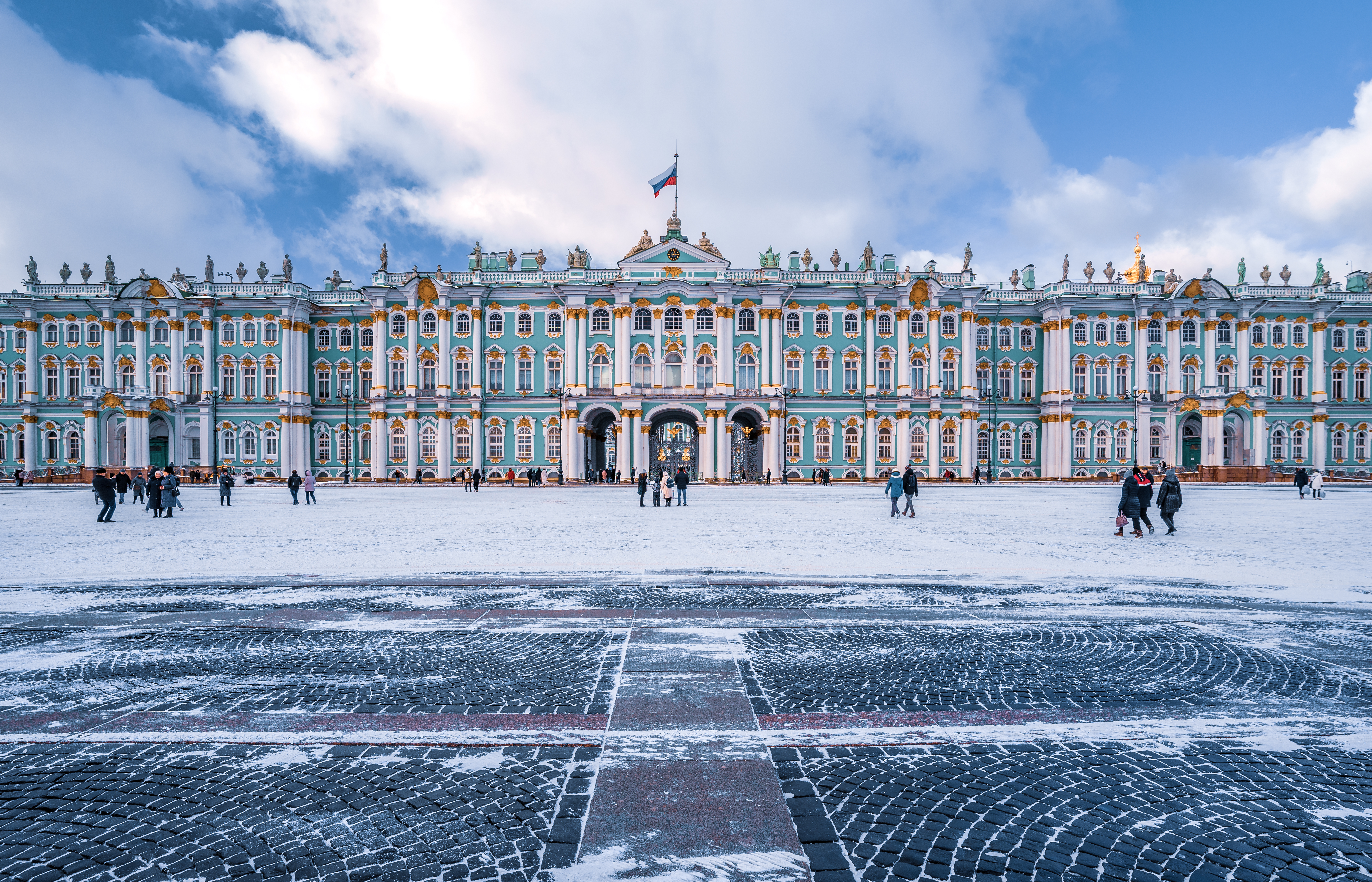«Balls, champagne wine, valets, cadets…» (the Russian Empire ball life)
 16.905 km.
16.905 km.
Санкт-Петербург долгое время был столицей Российской империи, где кипела вся общественная жизнь – политика, культура, развлечения. В этом вихре великосветских условностей важной частью были балы: от роскоши великолепных дворцов императоров и знати до уюта и камерности частных домов мещан.
In the time of a new capital foundation on the Neva river shore, dances were inherent part of European society life which was the ambition of Peter the Great. It was not only an entertainment and a kind of leisure activity. It was widely thought that dance helps to work out a deportment distinguishing a noble person from a bumpkin and it also helps to learn and hone manners. One could tell person could become a good courtier from the way person danced.
In the new capital first balls comes out quite early, in 1711. In 1718 after his return from Europe, Peter the Great issued his famous edict about Assemblies which became prototype of splendid Russian balls. Also he brought into vogue dancing skill – imperial couple loved to dance and knew a lot of dances.
In the days of Anna Ioanovna dances flourished. Namely this Empress opened Overland nobleman site where all Russian noble sons dreamed to learn and where dances was a compulsory subject; dancing school famous nowadays as the Russian Ballet Academy named after A.Ya. Vaganova. During the reign of Anna Ioanovna made appearance a tradition of a regular imperial balls – each year at the same feasts, for example at the patron saints Remembrance days of Russian orders St. Andrew the First Called and Alexander Nevsky, at the Christmastide, at the Empress Name day and at the day of her enthronement – at these days there were the balls at the Winter Palace or another imperial residence. As the years passed during the reign of other emperors some of the celebration days were changed, but tradition of annual imperial balls dedicated to important calendar milestones remained constant.
«Elizabeth was the joyful queen, she sing and joy…» – wrote Aleksei Tolstoy about the reign of Peter the Great’s daughter. For float, at the days of this Empress all Saint Petersburg danced, moreover at the books of that times was written that all novelties featured at the Versailles appeared in Petersburg within 4 weeks only. Foreigners admiringly imaged that 15 pairs were organically and contemporaneous stepping a Minuet ahead of the Empress. At the days of Elizabeth fancy-dress balls were remarkable popular. In fairness it must be said that usually all balls for which were prepared special dancing dresses was called “fancy-dress balls”. Faces were masked not in every instance.
Loving of fancy-dress balls also was inherited by Catherine the Great. At her reign public court balls and fancy-dress balls didn’t budge on the splendor of similar feasts in the days of Elizabeth. Aspiring for enlightenment Empress didn’t wasting the opportunity to use public feasts to liquidate a widespread society vices: for example, in December 1764 guests of the public fancy-dress ball had an opportunity to watch a few moral performances before it’s starting. Gained popularity in a high society fancy-dress balls however didn’t push out traditional balls. Ball was organizing at the court on each Sunday and it was starting with a Minuet: the Grand Prince with the Grand Princess, after them courtiers and guard officers holding the rank not lower than Colonel. After that were following contradances and «Polish» dances. Grandees organized private balls every day. According to the Komarovsky, on Wednesdays balls had princess Golitzina, on Sundays – countess Saltykova and so on. Merchants also organized balls and fancy-dress balls at their assemblies.
During the reign of Emperor Pavel situation changed. Balls and fancy-dress balls became disfavor, especially it concerned a new dance appeared at that period – waltz, which was temporary forbidden by the Emperor. There was issued a directive binding to turn off the light at 10 p.m. and therefore to finish all entertainment. According to the directive policemen watched at all fancy-dress balls which were marching on at private houses and theaters. For five years fancy-dress balls were liquidated substantially.
The beginning of Alexander’s reign was marked by splendid celebrations in both capitals – Saint Petersburg and Moscow. Fancy-dress balls became one of the most popular entertainment in XIX century by reason of their freedom and in-game origin. Public fancy-dress balls traditionally took place at the Winter Palace on the 1st of January. Delegates of different classes got together at the feast with more than 30000 guests. Feasts were stately, halls were decorated with great painters’ works which inspired societarian beauties to compose a life paintings. Balls were opening with the «Polish dance», after there were following anglaises, ecossaises and quadrille. Mazurka appeared in Saint Petersburg in 1810.
In the days of Nicholas I balls were given all year round except abstinence period. As before winter was a main ball time. Balls were held at the Bolshoi Theater and Nobility Assembly. They started at 9 or 10 p.m. to the strains of the polonaise from Rossini’s opera «Hermiona» and commonly continued till daybreak. Carousels – horse dances – come into vogue reflecting interest in past. «Ball with a servant» as a tribute to the times was held on the 1st of January 1828 at the Winter Palace. More than a half of the ball guests were St. Petersburg bourgeoisies. Also at those days dancing parties were very popular, not only balls. The difference between dancing party and ball lied in that dancing party didn’t claim a lot of guests. There was equal immodestly to put on street clothes or evening dress at a party – guests had to primp slightly. Party atmosphere was easy and joyful, evening program depended on host’s flair: it could be dances, dinners or card plays, discourses or argument conducts. Sometimes guests played skip rope and forfeits or danced waltzes.
In the days of Alexander II, in mid-to-late XIX century public balls in aid of a charity with entrance fee or special police permission became more popular. Public fancy-dress balls and concerts were organizing by the Imperial Theaters Directorate, about six fancy-dress balls were organizing by Petersburg Nobility Assemble and Moscow Honorable Assemble. Charities couldn’t organize fancy-dress balls. They was able to organize only public balls with lotteries, bazaars and auctions no more than once in a year at the days coordinated with the Imperial Theaters Directorate. At educational institutions and private clubs fancy-dress balls were organizing without entrance fee. Also there were children balls. In the halls of Nobility Assemble on 16th of February 1878 the charity ball was given by French colony to support of families of killed and wounded in the war. The ball ingathered about 5000 guests in spite of entrance tickets high price.
Court balls of the last quarter of XIX century in the reign of Alexander III were fundamentally symbolic and they had strongly pronounced political character. On 24th of January 1888 famous Green or also known as Emerald ball took place at the Winter Palace. At that ball most of women wore emerald jewelers had color of evergreen hope. Growing animosity between Russian and Austro-Hungarian Empires reflected in so called Black ball which was given on 26th of January 1889 at the Anichkov Palace in Saint Petersburg. “Black dresses, black hand fans, black gloves and black shoes – all of dresses were delightful. White diamonds and pearls on black satin, silk, gauze and dark tulle shimmered bright. Music program consisted of Viennese music only.” Guests waltzed to the «Wiener Blut», had supper to the strains of the «Hungarian dance» analogous to czardas.
In the early XX century in the days of Russian last Emperor, capital ball life abated in steps. Dancers continued their «light» dances repertoire with mazurka and waltz only. Usually after waltz there was the Hungarian dance, cracovienne, pas de patineurs, pas d'Espagne and pas de quatre. Polka, mazurka and others were extruded step by step with more reposeful dances in which dancers could `show` their grace and exquisiteness. Pas de quatre and chaconne resembled the idea and tempo of «Fêtes galantes» old dances – the period of court culture flourishing.
In the end of the First World War cosy family parties became popular. Tango and fox-trot were novelty. However fox-trot wasn’t counted as a float dance, tango role wasn’t sizable and there were a lot of indelicate anecdotes about this dance.


 Back
Back 